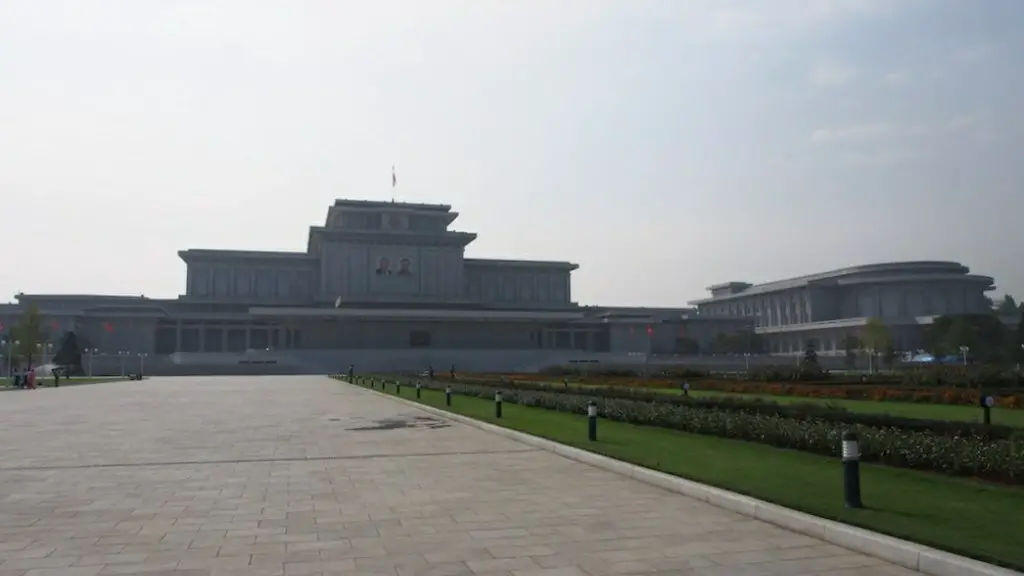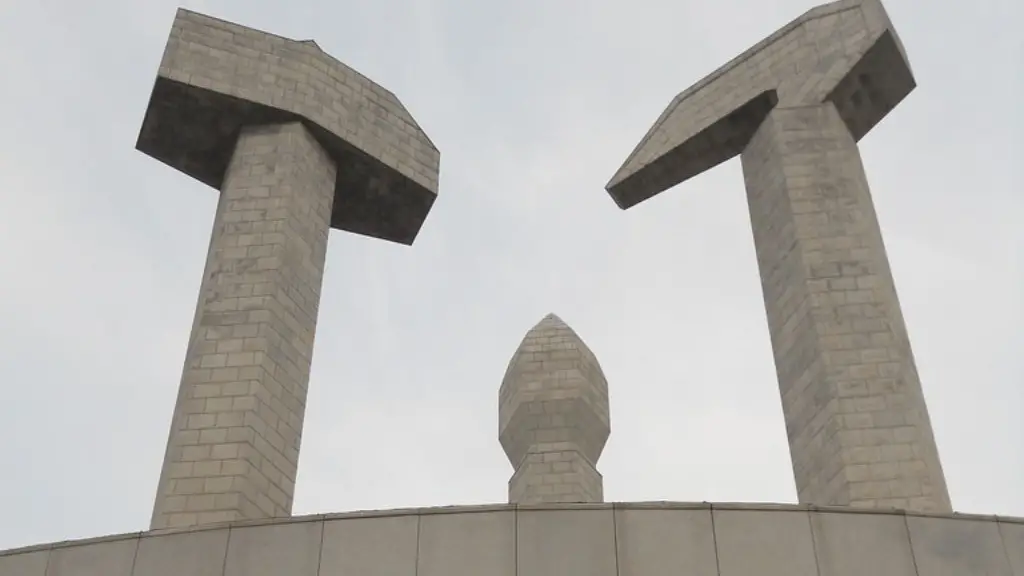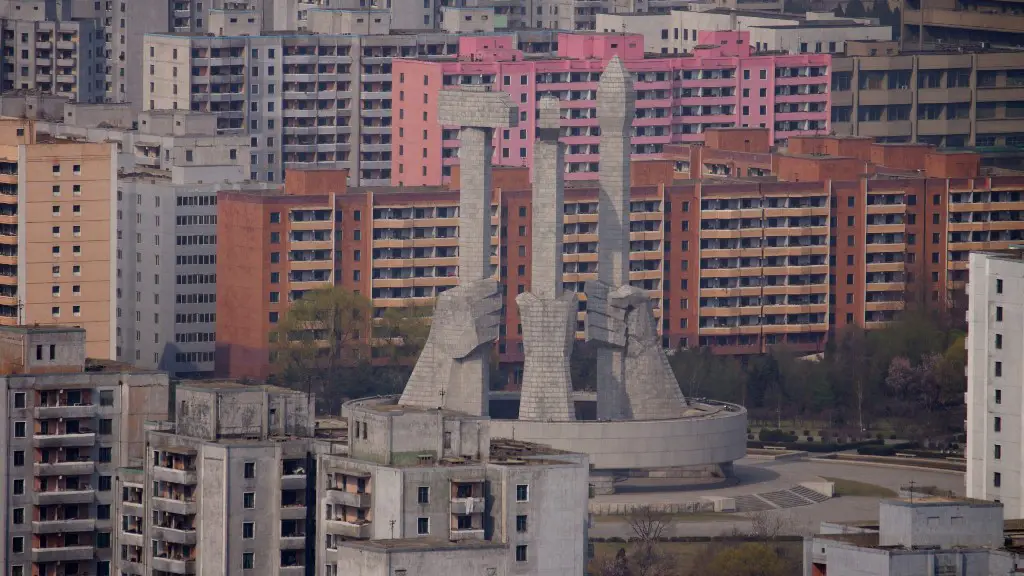How Big Is The US Military Compared To North Korea?
When it comes to military power, North Korea and the United States have been rivals for decades. However, despite their significant differences in economic and political power, just how different are their respective militaries? As it turns out, the US military is significantly bigger and more powerful.
Today, the US military is the largest and most powerful in the world, with a total active personnel of over 1.3 million; in contrast, North Korea’s military force is estimated to be between 700,000 and 1.2 million people. In addition, the US spends more per year on its defense budget than any other country. The US defense budget for 2020 was estimated to be over $732 billion, far exceeding North Korea’s estimated budget for the same year of somewhere between $1.2 billion and $6 billion.
This discrepancy in size and spending is also evident in the arsenals of both countries. The US military has thousands of combat aircraft, thousands of tanks and other armored vehicles, and carries thousands of nuclear weapons. In comparison, North Korea is believed to have approximately 41 combat aircraft and around 4,200 tanks and other armored vehicles. In addition, the DPRK is believed to have an estimated total of fewer than 20 nuclear weapons, compared to an estimated 6,000 to 6,500 nuclear weapons held by the US.
While the US has a clear advantage in terms of military size and budget, North Korea has a number of advantages that can make it a formidable adversary. The DPRK is located in a highly strategic area, which gives it access to countries like South Korea and Japan, both of which have large and well-equipped militaries with close ties to the US. In addition, North Korea also has a large network of underground facilities that can be used to protect its military assets. Furthermore, North Korea has invested heavily in cyber-warfare capabilities, giving it the potential to disrupt the US military’s operations.
Ultimately, the US military is significantly larger and more powerful than North Korea’s military. However, North Korea’s strategic location, underground facilities, and cyber-warfare capabilities give it some advantages that make it a formidable adversary. At the same time, the country’s limited economic resources mean that it is unlikely that the DPRK will ever be able to challenge the US militarily.
The US and North Korea Nuclear arsenals
In terms of nuclear capabilities, the US is far ahead of North Korea. The US has an estimated 6,000 to 6,500 nuclear weapons, with an estimated stockpile of 1,750 of them deployed at any one time. In stark contrast, North Korea has an estimated total of fewer than 20 nuclear weapons, with none deployed at this time. This discrepancy is due to the fact that North Korea does not have the technological capabilities or the resources to build a large stockpile of nuclear weapons.
However, North Korea does have a few advantages when it comes to nuclear capabilities. For one, North Korea’s missiles have a much longer range than those of the US; their short-range missiles can reach targets in South Korea and Japan, while their intercontinental ballistic missiles (ICBMs) can potentially reach Alaska and the US West Coast. Additionally, North Korea’s nuclear weapons are believed to be less sophisticated than the US’s and are much smaller in size. This, combined with their shorter range, makes them much harder to detect and more difficult to intercept.
Moreover, North Korea’s nuclear weapons are a powerful deterrent, as they represent a real threat to the US and its allies. As such, they give North Korea a certain level of leverage in their diplomatic negotiations with the US and other countries, making them less likely to be targeted by the US in a military conflict.
In sum, the US has a distinct advantage in nuclear capabilities when compared to North Korea. The US has the technological capabilities and resources to build a large stockpile of nuclear weapons, giving it a much larger nuclear weapons arsenal. In addition, the US’s missiles have much greater range than North Korea’s and are more sophisticated, making them hard to detect and intercept.
US & North Korea Military Budget
The US’s overwhelming military advantage over North Korea is also apparent in their respective military budgets. The US Department of Defense has the largest annual budget in the world, estimated at $735 billion for 2020. This massive budget supports the country’s military operations, equipment, personnel, research and development, and more.
In contrast, North Korea’s military budget is far less. Despite conflicting reports, the CIA estimates that the country’s total military spending falls between $1.2 billion and $6 billion. The bulk of this budget goes towards personnel, but North Korea also devotes resources to support military training, research and development, and procurement of necessary equipment. North Korea also relies heavily on military equipment from China, which is providing the country with an additional military edge.
The difference in military budgets reflects the discrepancy in the size and strength of the respective militaries. With far more resources to spend, the US is able to maintain a large and well-equipped military force. It is also able to invest heavily in research and development, allowing to it stay ahead of its adversaries technologically. In contrast, North Korea is clearly limited by its much smaller budget and is therefore unable to keep up with the US in terms of its military capabilities.
In conclusion, the US military is drastically larger and more powerful than North Korea’s military. This huge disparity is evident in the size and budget of both countries’ militaries, and in their respective arsenals. The US has thousands of combat aircraft, thousands of tanks, and thousands of nuclear weapons, while North Korea is estimated to have just over 40 combat aircraft, around 4,200 tanks, and fewer than 20 nuclear weapons. Furthermore, the US defense budget for 2020 was estimated to be over $735 billion, compared to North Korea’s estimated budget of somewhere between $1.2 billion and $6 billion.
Conventional forces of US vs. North Korea
The US military has a massive advantage over North Korea when it comes to conventional forces. The US has thousands of combat aircraft, thousands of tanks and other armored vehicles, and thousands of active personnel in its military. In comparison, North Korea is believed to have approximately 41 combat aircraft and around 4,200 tanks and other armored vehicles. This discrepancy in size and capability gives the US military a clear conventional forces advantage.
However, despite this advantage, North Korea does have some advantages when it comes to conventional forces. For one, the majority of North Korea’s conventional forces are located in the country’s mountainous and heavily fortified terrain. This makes them difficult to target and destroys for the US military’s precision-guided munitions. In addition, North Korea’s troops are well-trained, battle-hardened, and highly motivated. While the US’s forces often have to travel long distances to participate in military operations, North Korea’s troops are already located in the country’s strategic and heavily fortified terrain.
Furthermore, North Korea also has some advanced air defense systems that can help it protect its forces and territory from US air strikes. In particular, North Korea has the Russian-made S-300 and S-400 air defense systems, which offer it a significant advantage over the US. Additionally, North Korea also has hundreds of anti-aircraft guns, making it difficult for US aircraft to penetrate the country’s airspace.
In sum, while the US has a clear advantage when it comes to conventional forces, North Korea has some advantages that can make it a formidable adversary. North Korea has well- trained, battle-hardened troops, as well as sophisticated air defense systems and hundreds of anti-aircraft guns. Additionally, the country is located in a highly strategic area, giving it easy access to countries like South Korea and Japan. This gives it a certain level of leverage in its diplomatic negotiations with the US and other countries, making it less likely to be targeted by the US in a military conflict.
US Military Operations in North Korea
The US has a long history of military operations in North Korea, including the Korean War. The US has also participated in several training operations in the country and has, at times, provided logistical and intelligence support to the South Korean military. Additionally, the US military has conducted a number of surveillance operations in North Korea, using unmanned aerial vehicles (UAVs).
However, despite the US’s long history of operations in North Korea, the country remains largely closed off to the US military. North Korea is notoriously secretive about its military operations, and US access to the country is heavily restricted. As such, US operations in North Korea are often limited to observing the country’s activities and providing logistical and intelligence support to the South Korean military.
Moreover, the US military is limited in what it can do in the country. The US is limited in terms of the military equipment it can deploy in North Korea, as the country’s terrain and infrastructure are not suited for large-scale military operations. Additionally, the US is severely restricted in terms of the number of troops it can deploy in the country due to restrictions imposed by the armistice agreement at the end of the Korean War.
In conclusion, the US has a long history of military operations in North Korea. However, the country is largely closed off to the US military, and US operations in North Korea often limited to surveillance and providing logistical and intelligence support to the South Korean military. Furthermore, the US is severely restricted in terms of the number of troops and equipment it can deploy due to restrictions imposed by the armistice agreement.
US Diplomatic Relations with North Korea
The US and North Korea have a long history of diplomatic tensions. Since the end of the Korean War in 1953, the US has had a strained relationship with North Korea. The US initially maintained diplomatic ties with the country, but these relations deteriorated over the years due to North Korea’s nuclear weapons program and its refusal to engage in diplomatic talks with the US.
In recent years, diplomatic ties between the US and North Korea have improved somewhat. While both countries have remained far apart on issues like nuclear weapons and human rights, there have been recent diplomatic efforts to bridge the gap between the two countries. In 2018, US President Donald Trump and North Korean leader Kim Jong- Un held a historic summit in Singapore, during which they discussed possible paths to denuclearization. This was followed by a second summit in 2019, as well as several rounds of talks between US and North Korean officials.
Despite these efforts, significant differences still remain between the two countries. The US has called for North Korea to take tangible steps towards denuclearization, while North Korea has called for a step-by-step process that would include sanctions relief and the expansion of economic ties between the two countries. Additionally, there is also the issue of US human rights violations in North Korea. US officials have called on North Korea to improve its record on human rights, while North Korean officials have called for the US to end its military presence in the Korean Peninsula





